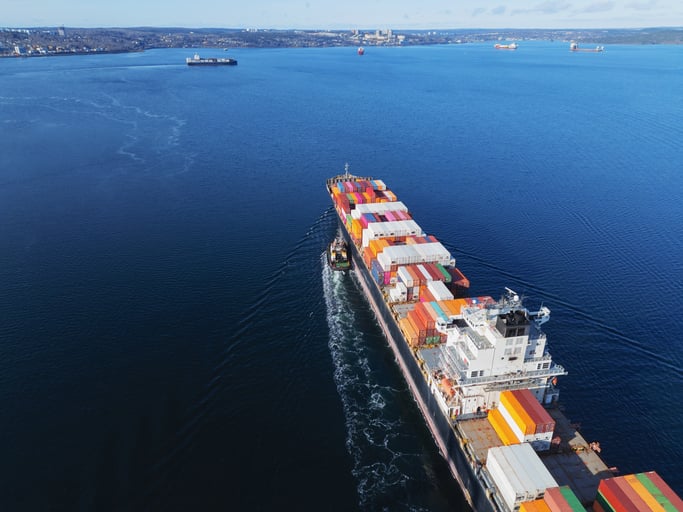Tariffs Deepen Global Trade Fault Lines, Forcing Businesses to Adapt

The fallout from recently enacted tariffs is reverberating across the globe, with consequences for consumers, manufacturers and trade-dependent economies. In the U.S., shoppers are beginning to feel tariff-driven inflation in their wallets, while in India, exporters face some of the steepest trade penalties in recent memory.
Beyond the politics, businesses are realizing that their survival depends on how quickly and precisely they can adapt to the new trade environment.
On August 12, the U.S. and China agreed to extend their tariff truce for another 90 days, keeping current rates in place until November 10. This pause offers short-term predictability but does little to address the broader reality that tariffs on other partners — including Canada, Brazil, the European Union (EU) and India — are already in force and shaping global supply chains.
In the U.S., July’s inflation report showed early domino effects. Prices of goods like furniture, toys and imported foods such as coffee and bananas are climbing.
Core inflation has edged above 3 percent, adding pressure to the U.S. Federal Reserve’s policy balancing act between controlling prices and supporting job growth. Meanwhile, tariff collections in June reached US$28 billion, with a growing portion of that cost passed directly to consumers.
India in the Crosshairs and the Stakes
India, one of Washington’s key trading partners, is facing a sharp escalation in duties on its products. After a 25-percent reciprocal tariff took effect on August 7, an additional 25-percent penalty was imposed August 27, bringing the total to a striking 50 percent, one of the highest rates applied to any U.S. partner. The measures are widely seen as leverage over India’s continued purchase of discounted Russian crude oil.
Prime minister Narendra Modi has pushed back forcefully, framing the tariffs as “unfair and unreasonable” and doubling down on a self-reliance agenda under the banner of “Make in India.” His address on August 15, Independence Day in India, laid out an ambitious path, from expanding domestic jet and semiconductor manufacturing to planning a national space station as part of a broader drive for economic sovereignty.
The fallout is visible in Gujarat, where exporters in textiles, leather, gems and chemicals are reporting canceled U.S. orders and looming job losses. India’s seafood industry, particularly shrimp and fish exporters, is scrambling to find alternative markets. In response, the government has launched a four-pillar strategy:
- Fast-tracking free trade pacts
- Improving ease of doing business
- Boosting export competitiveness
- Diversifying both markets and import sources
Yet the strategic layer runs deeper. For Washington, targeting major Russian oil customers like India is a way to squeeze Moscow without completely disrupting global energy flows. However, the approach risks damaging longer term defense and economic cooperation, potentially accelerating India’s outreach to other partners such as Russia, China and fellow BRICS members.
India and the U.S. are reportedly slated to begin tariff talks this week.
From Policy Shock to Operational Readiness
While the headlines focus on political maneuvering, the day-to-day reality for companies is far more granular and urgent. Every tariff action — whether from the U.S., EU or another trade partner — ultimately filters down to the level of product classification, landed cost and compliance risk. A single misclassified Harmonized Tariff Schedule (HTS) code can mean (1) paying the wrong duty rate, (2) missing an exclusion or (3) triggering a customs audit.
The complexity is compounded by how fast regulations change. HTS updates are issued several times a year, and special tariff programs, like Section 301, Section 232 and reciprocal tariffs, can change overnight. A code that’s duty-free today could carry a 25-percent penalty tomorrow.
This forces importers, customs brokers and compliance teams to track down updates from multiple agencies, including the U.S. Customs and Border Protection, the International Trade Commission and various partner government agencies like the U.S. Food and Drug Administration, U.S. Department of Agriculture and U.S. Consumer Product Safety Commission.
For high-volume importers, manual tracking and classification are too slow and error-prone to keep up with this environment. That’s why more businesses are turning to artificial intelligence (AI)-driven trade compliance systems that automate Harmonized System (HS)/HTS classification, continuously monitor regulatory changes and flag risks in real time.
These platforms scan product descriptions, match them against regulatory language and recommend the most accurate classifications. This reduces human error, improves consistency and alerts teams before costly mistakes happen.
By avoiding fines and penalties, this approach helps companies stay competitive when tariffs shift. By knowing exactly which products are affected and by how much, businesses can act quickly by:
- Adjusting sourcing strategies
- Applying for tariff exclusions
- Rerouting supply chains before costs spiral.
As the November 10 U.S.-China truce expiration, tariffs involving India and other negotiations unfold, the winners in this new trade war will be those that pair geopolitical awareness with operational agility.
The ability to connect tariff policy changes directly to pricing, sourcing and compliance decisions will define who merely survives and who thrives in an increasingly fragmented global trading system.

